Life at 200 Employees: Ten Insights from Namely CEO Matt Straz
By True Ventures, October 9, 2015
It’s been a record year of growth for Namely, the HR, Payroll, and Benefits platform that I founded in 2012. We’ve more than doubled our employee headcount in 2015 to break the 200-employee barrier, hiring a new person every business day in our New York and San Francisco offices. All that growth has brought big changes—especially in the way that I manage.
Here are 10 of the biggest insights I’ve had since hitting the 200-employee mark:
- It’s a BIG job.
Running a 200-person company is more like running a 2,000 person company than it is a 20-person startup. The employee experience becomes paramount at this size. Onboarding, HR, and training are not just nice-to-haves—they are absolutely mandatory.
- You need help.
For a long time, I delayed on hiring a CFO and CTO until I just couldn’t take it anymore. Now, I am so happy to have these people. We simply could not scale any further without them.
- “The product is not my product. The company is my product”
I repeat this mantra to myself every day. At 200 employees, you must shift your focus from your product to the company itself—that is what you should be working to make better each and every day. Having a dedicated product team that doesn’t include you—for the most part—is a must at this size.
- Meetings and more meetings.
I used to worry that when the management team was built, I wouldn’t have much left to do as a CEO. Au contraire, mon frère! Between running management meetings, meeting with clients, meeting with reporters, meeting with my direct reports, running our monthly all-company All Hands meetings, running our board meetings, meeting with future investors… well, you get the point. As a recently retired person might say, “I’m busier than I’ve ever been.”
- Become a great storyteller.
I have been reminded again and again lately how telling the story of our company is essential as we grow. New hires want to know things like how the company was started, why I named the company what I did, what does our logo mean, and why did I get into this business to start with? Passing your company story down to everyone that joins is immensely important.
- Mitigate risk…or else!
At 200 people, there is a pretty good chance that someone, somewhere is probably doing something that doesn’t align with the values of the company—it’s just the law of averages. That is why you must put controls in place to ensure that everyone stays on point. Having a strong HR team becomes necessity: recruiting, background checks, onboarding, and training is essential at this size.
- Lean on me.
Your direct reports—no matter how experienced they are—will want to check in with you regularly. For example, our CTO knows way more about tech than I do, and yet she still likes to check in often to share what she is thinking. It’s the same with our CFO, VP of Sales, and most everyone else. You may not be building the product anymore, but as CEO you must be accessible and available to your people every day.
- Embrace your inner Dr. No.
As your company grows to this size, the “opportunities” coming your way become far more frequent. Inbound email, LinkedIn messages, and other requests start to multiply. Most of it is a waste of time and should be met with a firm (but polite) “no thanks.” Otherwise, you’re just taking time away from your company, your family, your friends, and yourself.
- Eliminate wishful thinking.
When you first start a company, you need a ton of wishful thinking to get you to tomorrow. But once tomorrow has dawned, wishful thinking becomes enemy #1 as a founder. If you’re hoping something’s being handled, it probably isn’t. The best way to keep your company on track is to be brutally honest, with yourself and your management team, about the things you don’t do well—and then find a clear owner to go and fix them.
- Blow up the walls.
At 200 employees, walls between people and teams start to form, especially in a hypergrowth startup. As CEO, your job is to blow them up. I move my desk every 4 weeks so I can sit with a new team. It shows that I care about every group and sets an example for the rest of my management team.
We’ve also launched a number of initiatives to keep everyone in the company connected. For example, we have a New Hire Buddy program: Each new hire is paired with an employee who has been with the company for at least three months. The buddy helps show them the ropes and takes them out to lunch on the new hire’s first day.
I also insist that my management team not only has a 1-on-1 with me regularly, but also with each other at least once a month. Wherever you see walls going up, enlist your whole company to help you tear them down.
Matt Straz is founder and CEO of Namely (www.namely.com), the all-in-one HR, payroll, and benefits platform built for today’s workplace. Namely, his third startup, closed its Series C round of funding in June of 2015. Headquartered in New York City, the company helps innovative organizations everywhere build engaging company cultures and manage everything HR. He is a regular contributor to Entrepreneur and frequently writes for several other publications about human resources, startups, and technology. Follow him on Twitter: @mattstraz



